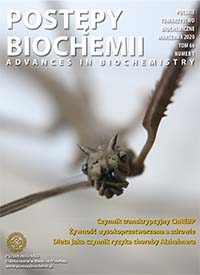Structures of rhizobial lipopolysaccharides and their role in symbiosis process
Rhizobial lipopolysaccharides
DOI:
https://doi.org/10.18388/pb.2020_316Abstract
Lipopolysaccharides synthesized by rhizobia have a various structure. Differences are observed in lipid A (considered as the most conservative part of LPS), in the core region, and in the O-specific polysaccharide. Lipids A may have different compositions of the sugar backbone and the acylation pattern. The core region of rhizobia mainly consists of hexoses, uronic acids, N-acetylquinohozamine, and Kdo, but has no heptose region typical for enterobacteria. The O-PSs may have a different structure even among strains of the same species. They are built of various monosaccharides and are often hydrophobic.
An appropriate structure of LPS domains is required for establishment of an effective symbiosis between bacteria and their plant host. Changes in the structure of LPS (most often caused by mutations) resulted in a decrease in efficiency or failure of atmospheric nitrogen fixation. Complete LPS protects symbiotic bacteria penetrating plant cells and determines the proper organization and maturation of symbiosomes.
Downloads
Published
Issue
Section
License
All journal contents are distributed under the Creative Commons Attribution-ShareAlike 4.0 International (CC BY-SA 4.0) license. Everybody may use the content following terms: Attribution — You must give appropriate credit, provide a link to the license, and indicate if changes were made, ShareAlike — If you remix, transform, or build upon the material, you must distribute your contributions under the same license as the original. There are no additional restrictions — You may not apply legal terms or technological measures that legally restrict others from doing anything the license permits.
Copyright for all published papers © stays with the authors.
Copyright for the journal: © Polish Biochemical Society.




